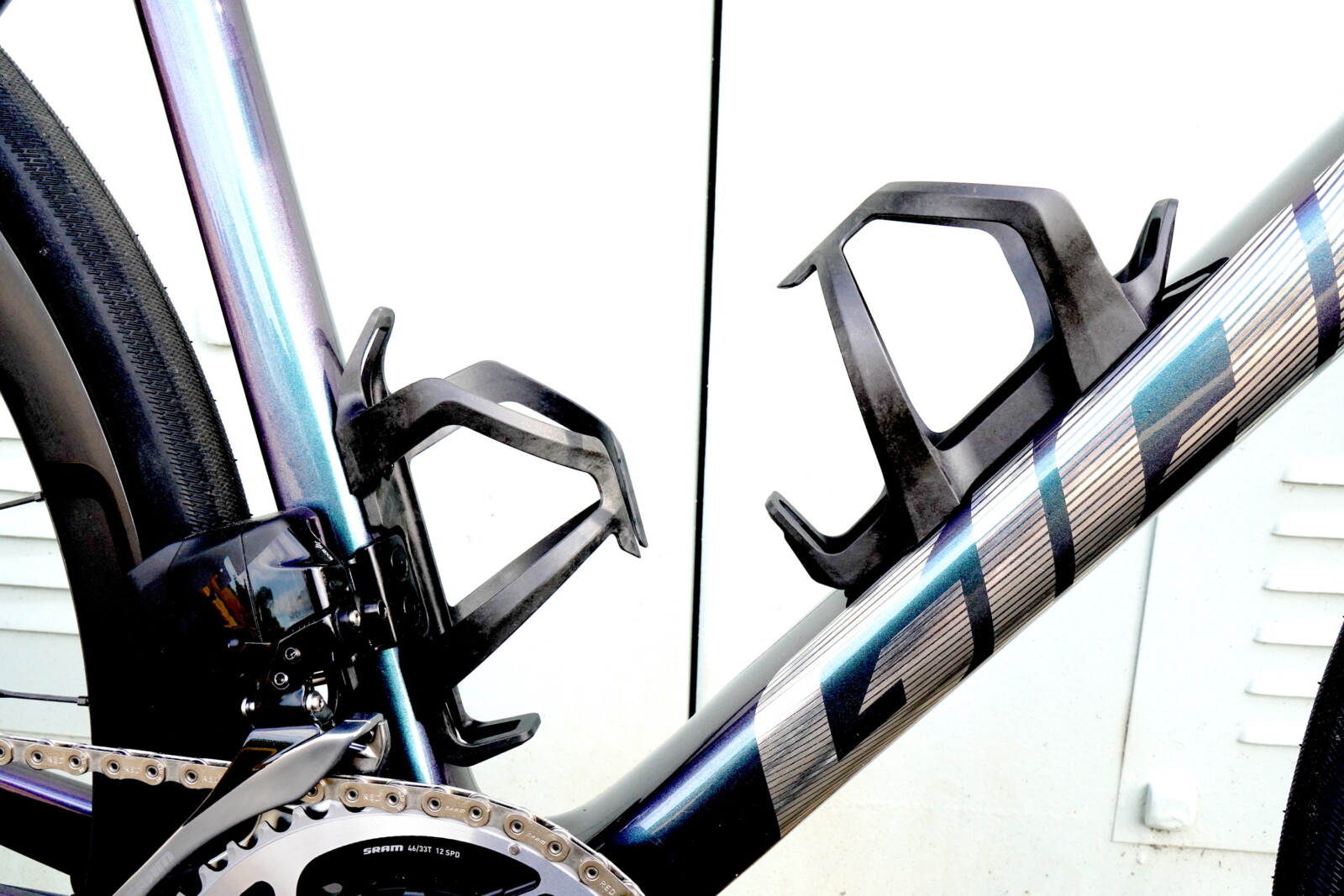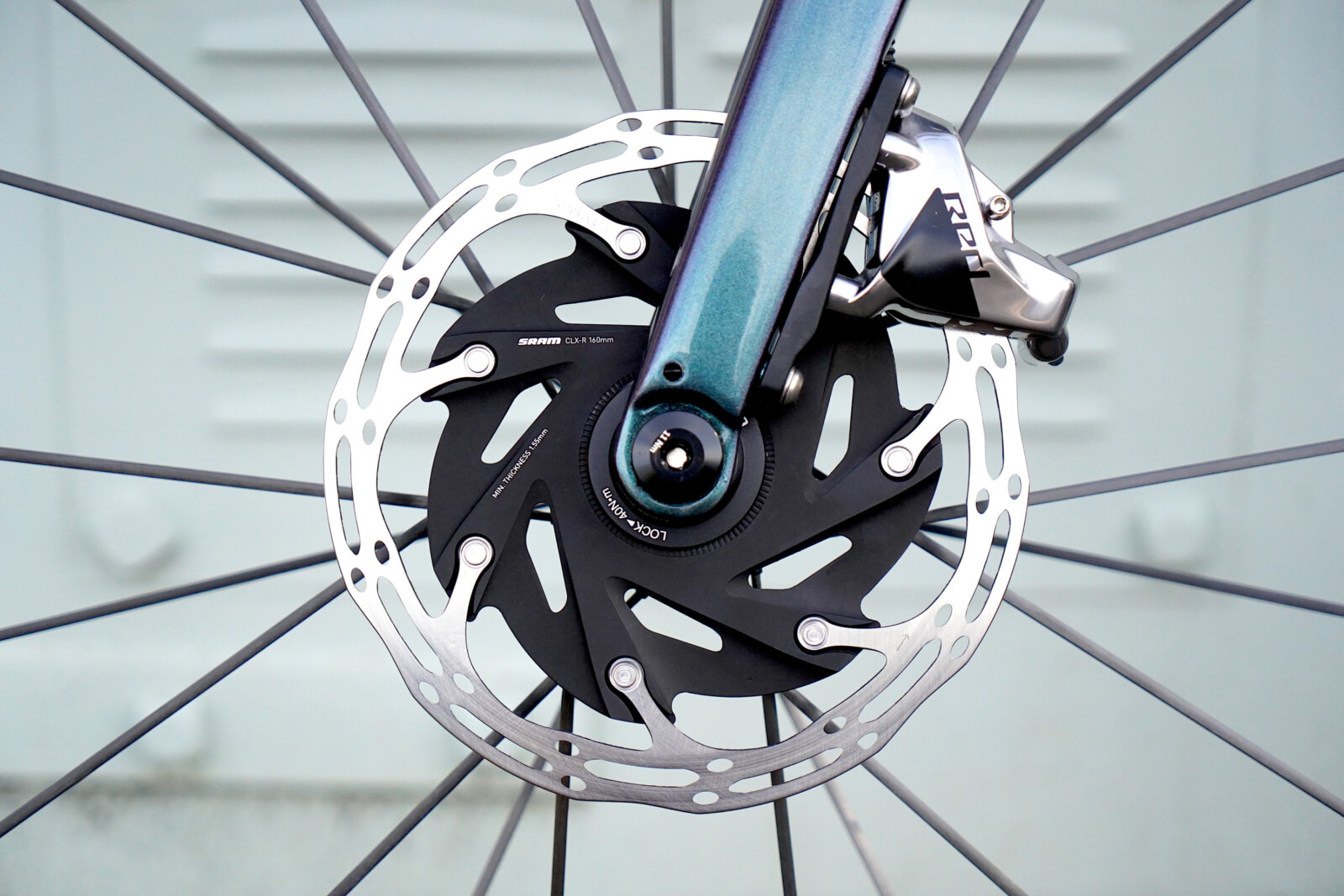It’s been a mainstay of the Giant road stable since it was first released back in 2008. With the recent arrival of the fifth-generation Defy endurance platform, Peter Maniaty finds no reason to suggest that’s about to change any time soon.
Giant Defy Advanced SL 0 (2024)
Twenty years ago, there was no endurance road bike market.Today, pretty much every major brand has at least one endurance offering, and the category continues to swell as more and more riders preference comfort and versatility over out-and-out speed. Slotting comfortably into this fiercely competitive landscape is the revamped Giant Defy Advanced which gets the full SL 0 treatment for 2024. Heralding the fifth generation of the Defy platform, this is a compelling all-rounder with plenty to offer Australian riders—together with the very tasty sweetener of unmistakable ‘Giant’ value.
No Gimmicks
In an industry awash with hyperbole, Giant is keen to point out its blueprint for the continued evolution of the Defy remains simplicity. “Less weight, better ride quality, no gimmicks,” says the official Giant press release.
In other words, this bike is all about sticking to the basics and doing them very, very well. Gazing at the all-new SL 0, it’s hard not to agree that’s exactly what they’ve done here. It certainly isn’t brash or radical to the eye.
Yet, after a month of hugely varied riding, it’s abundantly clear the Defy is indeed filled with many reasons to smile; a classic case of the sum of its parts being greater than the individual parts alone.

Styling
The fifth generation Defy Advanced is a thoroughly contemporary-looking road bike with clean lines, dropped seat stays, sleek carbon wheels and a very tidy two-piece cockpit with internal hose routing. However, in keeping with Giant’s ‘less is more’ mantra, there are few overt design quirks to speak of, except perhaps for the colour-shifting paint scheme that changes appearance in different light (and was quickly dubbed ‘Oil Slick’ by my teenage son).
Interestingly, quite a few people assumed this was a new TCR Advanced when they first saw it, and were a little surprised to learn it was actually the endurance-oriented Defy; just another example of the powerful convergence that continues to heavily influence modern bike design.
Frame & Geometry
Whilst visually the new Defy Advanced mightn’t scream out for your attention, there’s still plenty going on. Looking over the frame there are subtle hints of truncated tube sections here and there, but it’s all super relaxed, nothing sharp or angular whatsoever. The tube profiles and dropped seat stays are reasonably slender, with an elegant flattened top tube reminiscent of the Propel Advanced SL 0 tapering from front to rear.

Comparing the geometry charts, the 2024 Defy is a little lower and longer than the previous model. The stack drops by 9mm and standover height by 26mm, whilst the headtube has also been given a 10mm trim. In fact, now measuring just 150mm (Medium frame) the Defy headtube is only 5mm taller than the current model Propel and TCR. The result of all this is a more aerodynamic and sporty riding position, but one still brimming with comfort and compliance for long days in the saddle.
The wheelbase, rake and trail figures are effectively unchanged, as are the angles of the head tube (72.5degrees) and seat tube (73.5 degrees). For now, Giant has resisted the trend back towards threaded bottom brackets, sticking with BB86 press-fit – a decision that’s sure to please some, whilst frustrating others.
One thing that has changed, significantly, is frame weight. Produced in-house with Giant’s Advanced SL-Grade carbon composite, the new SL is the lightest Defy frameset ever released at just 785 grams (Medium, unpainted). That’s 195 grams less than the previous generation’s top-of-the-line Defy Advanced Pro frame.
The new carbon composite fork used on both the Defy Advanced SL and Pro models weighs just 350 grams, making it 15 per cent leaner than the previous generation, while the new Contact SLR D-Fuse handlebar is also 8 per cent lighter. Put it all together and, fitted with bottle cages and pedals, the full 2024 SL 0 review build (Medium/Large) weighs in at 7.6kg – a highly competitive figure that puts the Defy within 200 grams +/- of its main top-spec endurance rivals.

Of course, weight alone can be misleading. Efficiency (stiffness-to-weight) is seen as a more compelling indicator of a bike’s true capabilities nowadays, and it’s another area where the fifth generation Defy is impressive. Giant claims the new SL frameset is 28 per cent more efficient than the outgoing Defy Advanced Pro – and nothing I experienced in the real world suggests that’s an exaggeration.
This bike feels v-e-r-y efficient on the road, yet critically for an endurance bike it doesn’t come at the expense of rider comfort. Credit for this can be attributed, at least in part, to Giant’s new SLR D-Fuse seat-post. With a shock absorbing D-shaped composite shaft it allows up to 7mm of flex under load, significantly blunting the impact of the bumps and vibrations that typically travel up through the saddle.
Giant says its in-house testing shows the new Defy Advanced SL frameset and seat post together are a whopping 42 per cent more compliant than the previous generation Defy Advanced Pro series.

Components & Wheels
Beyond the new frame, fork and seat post, there’s plenty more to like about the Defy Advanced SL 0. For starters, the presence of SRAM’s top-tier Red AXS 12-speed wireless groupset with hydraulic disc braking (160mm SRAM CentreLine XR rotors, front and rear), DUB D1 46-33T compact crankset and Quark D Zero power meter. This high-calibre ensemble continues to impress and, let’s be honest, Giant is one of the few mainstream manufacturers where you’ll get SRAM Red AXS on a new top-spec build for less than $14,000.
Giant’s in-house CADEX 36mm carbon wheelset is another nice addition, although the ride is likely to be a touch stiffer than many riders are expecting from an endurance build. Hookless, tubeless-ready and laced with CADEX Aero carbon spokes – better at reducing high-frequency vibration damping than metal spokes according to Giant – I found these wheels versatile and feathery light at a touch over 1300 grams for the set.
Internally, the rims measure a reasonably wide 22.4mm and coupled with low friction hubs (ceramic bearings) and 32cm CADEX Classic tubeless tyres which measured wider in situ at about 33.5cm, they rolled beautifully. The maximum Defy tyre clearance has also been increased from 35mm to 38mm, providing even greater versatility. As with previous CADEX wheels I’ve ridden, the 40t ratchet freehub is fantastic, but also fantastically noisy. Seriously, if you like to fly under the radar in the bunch, you might find yourself feeling a little self-conscious with these things spinning beneath you.

The 2024 Defy Advanced SL 0 also features a completely new two-piece carbon handlebar and stem system. The Contact SLR D-Fuse handlebars (420mm on the M/L review bike) are impressively compliant and ergonomically shaped to allow your hands to rest comfortably in a variety of riding positions. I found the flattened tops especially cushy.
There’s also 8-degree flare down in the drops to help ease the pressure on your wrists, a welcome touch for longer rides and sustained high-speed efforts. As for the Contact SLR AeroLight carbon stem, it’s basically the same system as used on the Propel Advanced SL 0, with the same somewhat fiddly two-piece spacers. In theory, the two-piece system allows for easier serviceability/customisation and it’s indeed compatible with internally or externally routed 31.8mm handlebars.
However, currently the D-shaped OverDrive Aero steerer used on the Defy Advanced SL and Pro series fork is only compatible with Giant’s own Contact SLR & SL AeroLight stems so your options aren’t quite as abundant as first appears (for now anyway).
Something else I’ve always appreciated about Giant is they tend to include all the extra bits you might need with your original purchase. For example, your new Defy Advanced comes complete with computer mounts and bottle cages. Not big-ticket items, sure. But nice little touches that mean you don’t have to hunt around later when all you want to do is get out riding.
The Ride
Giant says the 2024 Defy Advanced is “the perfect companion for an all-day sportive, an ambitious gran fondo and epic solo days on challenging roads.” It absolutely is these things, but I felt it was actually a bit more.
Whilst it doesn’t have the explosiveness and agility of the Propel, it’s light enough and responsive enough to be a lot more interesting than a humble mile muncher. Yes, it takes an extra pedal rotation or two to wind things up, but acceleration is still more than sporty enough for most situations and it never felt as laboured as some endurance bikes I’ve ridden in the past.
Whilst a little lower and more assertive than the previous Defy, the riding position is still fairly relaxed and pleasantly forgiving compared to more race-configured options. During the review my longest ride was just a touch over four hours across varying terrain and road conditions. But the Defy SL 0 gave the distinct impression you could almost ride it forever.

Handling was an absolute standout for me. Not so much for pure agility, but for the wonderfully assured and confident feeling you have when piloting this bike. Steering was reasonably quick for an endurance bike, without ever feeling twitchy, and there’s more than enough feedback to give you an excellent feel for the road.
Coupled with the superb SRAM Red hydraulic braking system, descending and cornering held no fears whatsoever, even on questionable road surfaces. As for when the road points upwards? The 2024 Defy Advanced is certainly no TCR, but nor is it a slouch, especially with its lightweight frame complemented by a 46/33T compact crankset and 10-36T cassette. Again, it’s an infinitely better ascender than many endurance bikes out there.
Just quickly, whilst one of its Defy predecessors was ridden to Paris-Roubaix glory by John Degenkolb back in 2015, it’s worth keeping in mind the fifth generation Defy Advanced is still designed, spec’d and tuned to spend the bulk of its time on the road. That said, the set-up provided for the review proved more than robust enough to handle rougher country roads and the occasional bit of light gravel. The new Defy frame also includes mudguard/fender mounts with a removable rear bridge.

Summing Up
Giant are kicking some serious goals with its road range right now. Whilst the Defy has sometimes been overshadowed by the Propel and TCR, the fifth generation Defy Advanced SL 0 is a compelling upgrade to the triumvirate in 2024.
With fantastic ride quality and handling, sumptuous running gear and even more compelling value, it takes something that was already pretty darn good and makes it quantifiably better. Comfortable, smooth and balanced, this is a bike to remind you why you love cycling. You could ride it all day; day after day. Yet it also has just enough liveliness to keep things interesting.
Summing up
Quality
The Defy Advanced SL 0 is an endurance superbike, top shelf across the board.
Performance
Smooth, balanced and versatile. Sportier than you might think and fast enough for most, perfect for tapping out the kms all day long.
Value for money
Category leading. To enjoy the same lofty spec levels elsewhere, you could be paying thousands more.
Overall
Excellent frame. Excellent components. Excellent value. If you’re in the market for a high-end endurance bike, there’s little not to like here.




